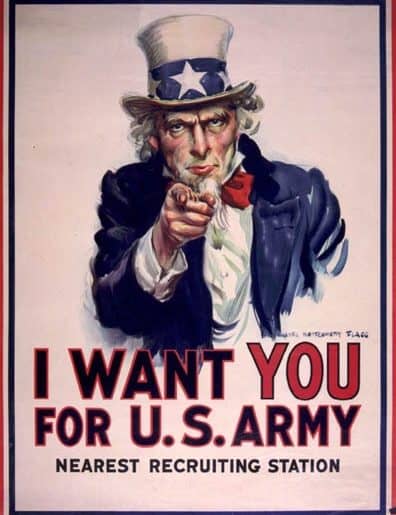As we shut our ears to the cacophony of the other side, the institution of democracy loses its ability to hold people together.
If the numbers are right, we are moving towards a world where everything is stretched and tied to two ends. Cass Sunstein, a Professor at Harvard University, argued whether the new public sphere woven by the internet acts as ‘echo chambers’ or not. In a paper published in 2002, Sunstein uses activities on Facebook to quantify people’s engagement with the other side. Several studies suggest that while interactions across the ideological divide are almost negligible, the ability to selectively exclude certain pages and people to pop into one’s feed can lead to both polarization and convergence.
Birds of a feather flock together
The idea of homophily is intrinsic to human beings. There’s a tendency to bond and associate with similar others. That is why people of a community tend to hold together in foreign lands. It is also the reason why Indians and Pakistanis bond so well as immigrants in a western country, particularly due to a South Asian affinity.
The feathers begin to rot when they’re painted with political colours. People begin to ignore facts and constantly attempt to prove the other side wrong. Political polarization then extends to sensitive issues like LGBTQ rights, climate change and abortion. The Red states in the US actively deny climate change, even after being exposed to facts which claim the opposite. Groups, therefore, have shared opinions on most issues.
Political Echo Chambers allow think tanks and entrepreneurs to exploit voters by fooling them using certain tactics. They help leaders to present different images to different people, which helps them to secure a place in the heart of every voter. A single leader can be present at many places ideologically, by presenting themselves differently to different kinds of voters.
The Internet as a ‘Public Space’
The bricks of these chambers are placed by the invisible hands of the Internet. With its invention, people believed that the world will now be able to interact with each other in a better manner, thereby filling chests with tolerance and empathy. As a fact, on Facebook, 99.91 per cent of the two billion people on it belongs to a single huge component, and hence everyone is connected to everyone in some manner. Unfortunately, none of this has led to fruitful conversations among people.
For one, sites like Twitter and Facebook function as echo chambers. The design of such websites allows people to adopt a homophilic approach, which narrows the divide between the Internet and the real world. A study of 2.2 million politically engaged users on Twitter in the US finds that while there are roughly 90 million network links among these users, 98 per cent of first retweets of Republican voters come from conservative voters. The corresponding number for Democrats is 86 per cent.
Offline Polarization
But polarization is not limited to the internet users. Fake news was invented long before Facebook, and partisanship existed through newspapers and TV channels. News Channels, to maintain their viewership, picked sides and broke their supposed vow of remaining unbiased. While Fox news moved towards the right, channels like MSNBC started appealing more to liberal voters of the US. A homogeneous audience pushed them towards their extreme sides, something that these channels might not have anticipated. Polarization has increased the most for an older audience, who are least likely to be on the internet and consume articles produced by traditional media houses.
Effect on Preferences
Economists like to assume that preferences are both stable and coherent. But the former might lose ground if the idea of Echo Chambers yields the expected results. Absurd preferences, such as a hatred for blacks, can get intensified with repetitive exposure to similar views. Such peculiar opinions keep persisting due to limited exposure to the other side. Furthermore, the opportunity to choose the news one consumes adds fuel to the fire.
An Ailing Civic Discourse
An understatement would be to say that Echo Chambers do not encompass matters of civic importance. Social media has made it easier for news to originate and circulate, which means that virtually anyone can produce a rumour within seconds, and these chambers can, in turn, empower such people. It kills the production of reliable news and analysis. Moreover, original pieces aren’t credited, since copying something is easier than ever now.
Facts cease to matter after a point. Constant repetition of certain ideas targeted at certain people pushes them into a cult. Ideas become elements of belief for people, an ideology they must hold onto to ‘prevent’ the other side from attacking them. Conversations become violent and stop yielding results. Lack of confrontation in the virtual world erodes mannerism, which encourages sharp language that only results in chaos. As Plato pointed out in Allegory of the Cave, ridiculing the uninformed is the worst form of enlightenment, and radicalization is the only fruit.
The Democracy of the Future
As people get disconnected over a network of connections, the idea of democracy weakens. Polarization, as is evident, happens offline as well, which affects people of all ages. Radical views are supported by numerous people now, and the truth loses its value. Democracy, which is supposed to work for everyone, folds itself into the world of a group of self-conforming individuals who hold mirrors and reflect similar ideas. The walls prevent interaction with the outside world. An example of how a Radio company’s actions in Rwanda led to a mass genocide of fifty thousand people is chilling. The way out of these chambers is unknown since people can customize what they view.
But this choice itself can be a saviour. Experiments show that people choose to move towards the centre when informed about the leanings of all media houses. But such laboratory customized experiments can only reveal a little about this world. We are yet to solve most of our problems.
Featured Image Credits: BBC Future
Kuber Bathla


